Follow the Boys
Cast & Crew
Eddie Sutherland
George Raft
Vera Zorina
Grace Mcdonald
Charles Butterworth
George Macready
Film Details
Technical Specs

Synopsis
After the final performance of the last show at the Palace Theatre in New York, old-time performer Nick West attempts to give a farewell speech, but becomes choked with emotion, so his son and fellow performer Tony finishes it for him, proclaiming that vaudeville will never die. Vaudeville houses continue to close, however, and the Three Wests--Nick, Tony and his sister Kitty--find it difficult to get bookings. Despite his father's objections, Tony breaks up the act and heads for California to try his luck in motion pictures. He soon finds work in the chorus at Universal Pictures, where he catches the eye of musical star Gloria Vance. The two quickly become screen partners, then man and wife. After the Japanese attack on Pearl Harbor, Tony tries give up his newly found Hollywood stardom and enlist in the U.S. Army, but is rejected because of an old knee injury. He asks, however, that no one, including Gloria, be told of his rejection. Meanwhile, Private "Chick" Doyle, an old vaudeville friend of the Wests, is put in charge of organizing entertainment for the soldiers at his camp, and he gets Nick and Louie Fairweather, an animal trainer, to promise to help. In turn, Nick asks for his son's help, and Tony soon finds himself organizing the Hollywood Victory Committee (H.V.C.), a consortium of motion picture, theatrical and radio personalities dedicated to help the war effort, including the creation of war bond drives and U.S.O. Shows. While returning home from one such show, Tony gets into an argument with Gloria after refusing to listen to her when she tries to tell him that she is pregnant. The misunderstanding leads to the couple's separation. After many months organizing the H.V.C., Tony goes overseas to Brisbane, Australia with a U.S.O. troupe. Breaking her word to Gloria, Kitty tells Tony that he is about to become a father and he makes plans to call his wife upon their arrival onshore. Their cargo ship is attacked by a Japanese submarine, however, and Tony is killed. With her late husband proclaimed a hero on the cover of Life magazine, Gloria takes Tony's place entertaining the troops, along with hundreds of other stars.

Director
Eddie Sutherland
Cast

George Raft
Vera Zorina
Grace Mcdonald

Charles Butterworth
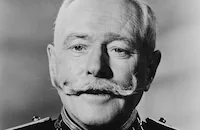
George Macready
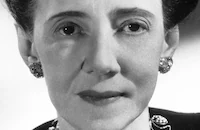
Elizabeth Patterson
Theodore Von Eltz

Regis Toomey

Ramsay Ames

Martha O'driscoll
Maxie Rosenbloom
Spooks [a Dog]

Jeanette Macdonald
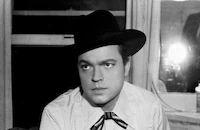
Orson Welles

Marlene Dietrich
Dinah Shore
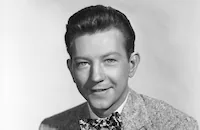
Donald O'connor

Peggy Ryan

W. C. Fields

The Andrews Sisters

Artur Rubinstein
Carmen Amaya

Sophie Tucker
Delta Rhythm Boys
Leonard Gautier's
Ted Lewis
Freddie Slack
Charlie Spivak
Louis Jordan

Louise Beavers
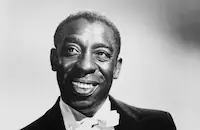
Clarence Muse

Maria Montez
Susanna Foster

Louise Allbritton

Robert Paige
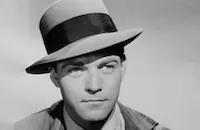
Alan Curtis

Lon Chaney [jr.]

Gloria Jean
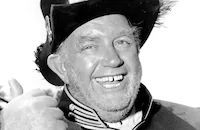
Andy Devine

Turhan Bey
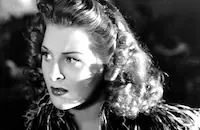
Evelyn Ankers
Noah Beery Jr.

Gale Sondergaard
Peter Coe
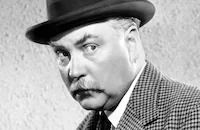
Nigel Bruce

Thomas Gomez

Lois Collier

Randolph Scott
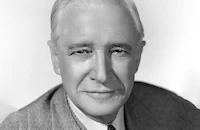
Samuel S. Hinds
Mack Gray

Molly Lamont
John Meredith
John Estes
Ralph Gardner

Doris Lloyd
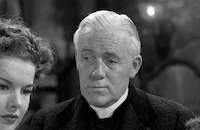
Charles D. Brown
Nelson Leigh
Lane Chandler
Bill Healy
Cyril Ring

Emmett Vogan

Addison Richards
Frank Larue
Tony Marsh
Stanley Andrews
Leslie Denison
Billy Wayne
Leyland Hodgson
Frank Jenks
Jimmy Carpenter
Bernard Thomas
John Whitney
Walter Tetley
Joel Allen
Carlyle Blackwell
Michael Kirk
Mel Schubert
Stephen Wayne
Charles King

Ralph Dunn
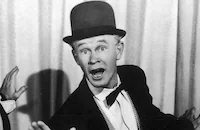
Billy Benedict
Grandon Rhodes
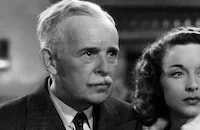
Howard Hickman
Edwin Stanley
Roy Darmour
Carl Vernell
Wallis Clark
Richard Crane
Frank Wilcox
Carey Harrison
William Forrest
George Riley

Steve Brodie
Jack Wegman
Clyde Cook
Bobby Barber
Dick Nelson
Anthony Warde
Tom Hanlon
Don Mcgill
Franklin Parker
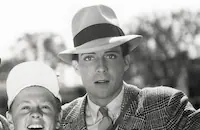
Dennis Moore
Martin Ashe
Odessa Lauren
Nancy Brinckman
Janet Shaw
Jan Wiley
Bill Dyer
Duke York
Lennie Smith
Robert Ashley
Jackie Lou Harding
Genevieve Bell
Edwin Stanley
Don Kramer
Allan Cooke
Luis Torres
Nickolai
John Duane
Ed Brown
Clair Freeman
Bill Meader
Eddie Kover
Tony Hughes
Crew
David Abel
Lewis Allan
A. Anderson
Frank Artman
Billy Austin
George Balanchine
Ben Bernie
Irving Bibo
Marjorie Bowles
Lou Breslow
Lou Breslow
S. Bricker
Shelton Brooks
Bernard B. Brown
Fred Buckley
Henry Thacker Burleigh
Sammy Cahn
Charles Carroll
Kenneth Casey
Dick Charles
Wallace Chewning
Howard Christie
Con Conrad
C. Cowie
Frank Davenport
Walter Donaldson
Bert Duke
Fred E. Ahlert
Emmy Eckhardt
E. Esterbrook
Fred R. Feitshans Jr.
Charles K. Feldman
Charles K. Feldman
Dorothy Fields
Dan Fish
Fred Frank
John P. Fulton
R. A. Gausman
Arthur Geisle
Maury. Gertsman
Kermit Goell
John B. Goodman
Howard Greer
George Hale
Leigh Harline
W. Franke Harling
Bert Heinsickson
Frank Heisler
William Holland
Dorothy Hughes
M. Inger
Inez James
Isham Jones
Louis Jordan
Gus Kahn
Lackritz
Carl Lee
Franz Liszt
Harold H. Macarthur
Larry Markes
James Masterson
Jimmy Mchugh
Sidney Miller
Hal Mohr
Phil Moore
M. Nathan
George Oppenheim
R. Parish
Maceo Pinkard
Robert Pritchard
Gertrude Purcell
Jack Rawlins
Eddie Regan
J. Rixey
Leo Robin
Earl Robinson
Albert L. Rockett
Henry C. Rogers
Augustín Castellón Sabicas
Ross Savon
Joe Schoenfeld
William Schwartz
Willard Sheldon
Harold I. Smith
Jule Styne
Roy Turk
Charles Van Enger
Consuelo Velázquez
Ira S. Webb
Charles Weintraub
Vera West
Richard A. Whiting
Leo Wood
Walter Woodworth
Jack Yellen

Film Details
Technical Specs

Award Nominations
Best Song
Articles
Peggy Ryan (1924-2004)
Born Margaret O'Rene Ryan on August 28, 1924, in Long Beach, California, Ryan began dancing professionally as a toddler in her parents' vaudeville act, the Dancing Ryans, and was discovered by George Murphy when she was 12. Murphy arranged for young Peggy to dance with him in the Universal musical Top of the Town (1937). She would go on to make a few more film appearances over the next few years - the most striking of which as a starving, homeless girl in John Ford's The Grapes of Wrath (1940) - yet for the most part, she was hardly noticeable apart from a few dance numbers.
Her luck changed when Universal cast her opposite another teenage hoofer, Donald O'Connor in What's Cookin'? (1942). From then on, they teamed in a series of innocuous musicals that were low on production values, but high on youthful pluck. Just check out some of their titles: Private Buckaroo, Give Out, Sisters!, Get Hep to Love (all 1942); Top Man, Mr. Big (both 1943); Chip Off the Old Block, This Is the Life, and Bowery to Broadway (all 1944). They may have not been high art, but jitterbuggin' kids loved it, and given the low investment Universal put into these pictures, they turned quite the profit.
Her career slowed down after the war. In 1945, she married songwriter James Cross, and didn't return to films until 1949, when she made two minor musicals that year: Shamrock Hill, There's a Girl in My Heart. She divorced Cross in 1952 and met her second husband, dancer Ray McDonald, in her final film appearance, a forgettable musical with Mickey Rooney, All Ashore (1953). Tragically, McDonald died in 1957 after a food choking incident, and the following year, Ryan moved to Honolulu after marrying her third husband, Honolulu Advertiser columnist Eddie Sherman. She kept herself busy teaching dance classes at the University of Hawaii, but in 1969, she found herself back in front of the camera as Jenny Sherman, secretary to Detective Steve McGarrett (Jack Lord) on the long-running show Hawaii Five-O,. She played the role for seven years, remaining until 1976.
Eventually, Ryan relocated with her husband to Las Vegas, where for the last few years, she was teaching tap dancing to a whole new generation of hoofers. She is survived by her son, Shawn; daughter Kerry; and five grandchildren.
by Michael T. Toole

Peggy Ryan (1924-2004)
Quotes
Trivia
Notes
The working titles of this film were Three Cheers for the Boys, Hip Hip Hooray, On with the Show and Cheers for the Boys. Other titles considered by Universal for the film included Three Cheers and Happy Days. Musical numbers missing from this print, which ran 110 minutes, include Sophie Tucker's rendition of "Some of These Days" and Dinah Shore's performance of "Mad About Him Blues." In addition to "Shoo Shoo Baby," The Andrews Sisters performed a medley of their hits, including brief segments of such songs as "Bei Mir Bist du Schön," "Boogie Woogie Bugle Boy," "Pennsylvania Polka," "Hold Tight, Hold Tight (Want Some Sea Food Mama)" and "I'll Be with You in Apple Blossom Time." In addition to the musical numbers, Follow the Boys features a magic act by Orson Welles and Marlene Dietrich, which they performed numerous times during the war to entertain the troops. W. C. Fields also reprised his famous pool-shooting routine, which he had first performed in vaudeville and then in his film debut in the 1915 one-reel silent, The Pool Shark. Classical pianist Artur Rubinstein made his motion picture debut in Follow the Boys. The Palace Theatre in New York, as depicted in the beginning of the film, was a 1,735 seat vaudeville house which opened on March 24, 1913 and closed on 16 November 1932.
Follow the Boys was Universal Pictures' contribution the all-star musical revues that were being presented by the major Hollywood studios in support of the war effort. Other films in this vein include Warner Bros.' Hollywood Canteen, M-G-M's Thousands Cheer and Paramount's Star Spangled Rhythm (see entries below). According to Universal press materials, the actual Hollywood Victory Committee arranged for 1,562 actors and actresses to make 12,619 free appearances at 2,197 events in 1943, as well as raising billions of dollars in war bonds.
According to a contract found in the Charles K. Feldman papers at the AFI Louis B. Mayer Library between producer Feldman and writer/director A. Edward "Eddie" Sutherland, Feldman, who was chairman of the Talent Committee for the H.V.C., agreed to pay Sutherland $6,000 a week, for a minimum of six weeks, to write a screenplay with Gertrude Purcell called Three Cheers for the Boys. The contract also contained a provision for Sutherland to direct the film. In July 1943, Feldman brought writer Stephen Longstreet onto the project, who finished his re-write of the script on July 20, 1943, at which time writer Lou Breslow was hired by the producer to touch up the screenplay.
On August 6, 1943, Feldman signed a contract with Universal to produce a screenplay entitled Three Cheers for the Boys, written by Purcell, Longstreet and Sutherland. Under this contract, Universal agreed to produce the film, under its new title On with the Show. According to the Feldman papers, Follow the Boys had grossed $1,520,000 in its domestic releases as of October 31, 1959, with a worldwide gross in excess of $2,460,000.
Hollywood Reporter news items include Elyse Knox and the dance team of Cappella and Patricia in the cast, but their appearance in the released film has not been confirmed. Universal press materials state that Donald O'Connor and Peggy Ryan's musical number, "Kittens with Their Mittens Laced," was filmed during its actual performance before a military audience at Camp Roberts, CA. According to the Feldman papers, stock footage of overseas entertainment shows were provided by the U.S. War Department's Bureau of Public Relations. Hollywood Reporter news items also report that flamenco dancer Carmen Amaya, the only Latin player in the cast, received billing above the other Hollywood guest stars when Follow the Boys opened in Mexico. Jule Styne and Sammy Cahn received an Academy Award nomination for their song "I'll Walk Alone," but lost to the Jimmy Van Heusen-Johnny Burke composition "Swinging on a Star" from the Paramount release Going My Way .
Modern sources add the following actors to the cast: John Carson (Solider at radio), Bill Wolfe (Zoot suit man), Daisy (Fifi, a dog), Lee Bennett (Acrobat), George Eldridge (Submarine officer), Marie Osborne (Nurse), Nicodemus Stewart (Lt. Reynolds, USAF), George Chirello (Magician's assistant), Janice Gary, Jane Smith, Marjorie Fectan, Doris Brenn, Rosemary Battle, Lolita Leighter, Mary Rowland, Eleanor Counts and Linda Brent (Magic maids), Augustín Castellón Sabicas and Philo McCullough.














